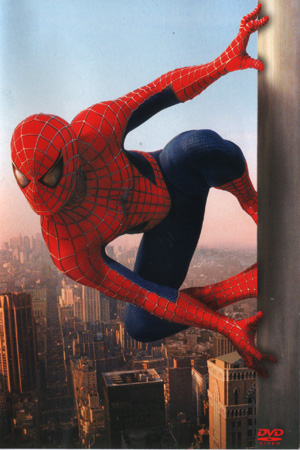
Monday and Wednesday 6:30-9:30
Art + Architecture Bldg. 2043
Gloeckner's e-mail
Gloeckner's web site
School of Art and Design
U of M
• SYLLABUS
• SEMESTER SCHEDULE
• STUDENT PROJECTS, winter 05
fall 04
• PROJECT 1
• PROJECT 2
• COMICS RESEARCH PROJECT
DEVELOPING COMICS ENCYCLOPEDIA: ARTISTS • THEMES
The Evolution of Comics Into Film
by Max Mollhagen-Jaksa
Fall 2004
MORE INFO | MORE ARTISTS | COMICS-RELATED TOPICS
Technologies, however, have since advanced. By the mid-to-late eighties and all through the nineties, the mainstream American comic book audience turned elsewhere for visual thrills—leaving the comic book for dead. Hollywood, and now beyond, have become the sites for the fantastic. Particularly with the incorporation of computer technologies into full motion video has allowed for the most fantastic visual facades yet. Just now in film can these characters work, and thus we are seeing an astounding number of comic book icons melding into the medium of video.
All the while, this technological advancement has put the mainstream American comic book into quite a unique position. Many creators have come into an acceptance of this “role shift” and reflect as much with the quality and thoughtfulness of their works. As early as the mid-eighties, we can see Frank Miller crafting “The Dark Knight Returns”—a “superhero” book that becomes extreme social commentary. Writers have found a consistent challenge to expand these characters and stories outside the shadow of the generic “BANG!”, “POW” stereotypes into substantial and meaningful narratives.
This “era” of modern comic books has been called a comics renaissance by many critics and aficionados of the form. Whether renaissance or not, it is assuredly curious to see the form rise and reinvent itself to this older and more mature audience.

From Spiderman | Batman poster